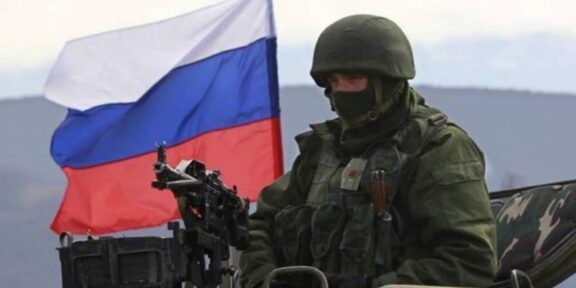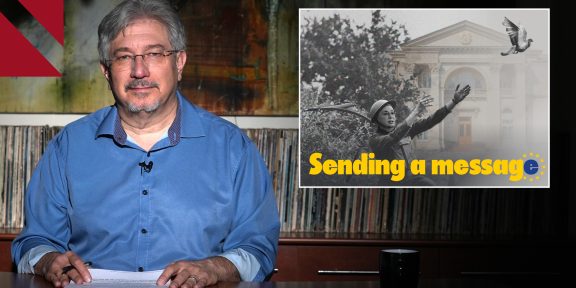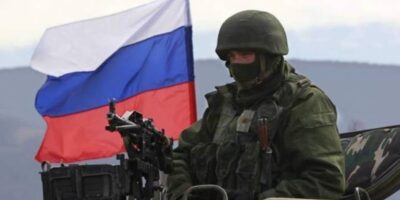By Agnessa Kasumyan
Beneath the ground floor of the University of Southern California’s Doheny Library stands a poignant but powerful exhibit. Featuring around 160 images, the exhibit, called “UNDELIVERABLE: Postcards and Photos of Lives Interrupted,” evokes feelings of a harrowing past but hopeful future as surviving generations of Armenians walk the quiet corridors of the library to glimpse into a history disrupted by violence. Organized by the USC Institute of Armenian Studies and co-curated by Narineh Mirzaeian, a Los Angeles-based designer and architect, UNDELIVERABLE opened onAugust 28 and has been extended to run through January 2018.
The sepia-toned postcards belong to the Orlando Carlo Calumeno Collection & Archives, initiated by an Istanbul-based businessman whose collection spans 80,000 and offers insight into the daily lives of Armenians living in Ottoman Turkey. According to Osman Koker’s volume one of “Armenians in Turkey 100 Years Ago,” the images, printed between 1895 and 1921, “offer information about the role played by Armenians in the economical, social and cultural life of the settlements in which they lived” during the Ottoman period.In an interview with the Institute, Calumeno said that his collection aims to shed light on the lives of minorities in the Ottoman Empire.
“Anatolia was a mixed cradle of civilization,” he said. “Multilingual, multi-faith, multi-cultural. That has been lost in the transition to the Republic. Anatolia is far behind where it was 500 years ago. Its greatness was in that melting pot of all those different cultures — Armenians, Assyrians, Jews, Greeks, Kurdish people, Italians, Germans, French. Now it has become mono-cultural and mono-lingual. When you lose the minorities, you lose Anatolia basically. That’s the spirit of the entire collection.”
Calumeno began collecting when he was just 16-years-old, after walking into a used bookstore and picking up a postcard of the Hippodrome Square. On the back was text in a strange language he did not recognize. Upon taking it home, his mother informed him that it was Armenian.
“It was like an awakening,” he told the Institute. “Like my roots calling me.”
Calumeno, who is half Armenian through his mother’s side, speaks the language but cannot read or write in it. He is Italian through his father’s side, whose family is one of the oldest surviving Italian families in Istanbul, having lived there for 400 years.
While Calumeno began by collecting postcards with only Armenian inscriptions, he expanded the collection to include all minorities.
“We try to visualize every corner of Anatolia—how it was 120 years ago,” he said.
For Calumeno, the postcards make him feel like he is going back in time to a happier and more diverse past.
“Each one is a gateway to connect with the past—a glorious past where everybody called each other ‘my brother, my sister,’” he told the Institute. “In today’s world, it’s hard to imagine this. Not everything was beautiful, but when you go back to pre-genocide Anatolia, you see these naïve people — not knowing what is going to happen in the future. They all live happily. And in these images, they live happily forever.”
The installation of postcards and photographs also includes work by Norair Chahinian, a Brazilian Armenian from Sao Paulo. Drawn from two of his photography books, “Armenia” (2008) and “The Power of Emptiness” (2012), Chahinian’s photographs are documentations of his personal journey throughout Armenia, Syria and Turkey, where he traveled to explore his cultural and ethnic roots.
While he started his explorations off with Armenia and Syria in 2004, he first landed in Turkey in 2012, according to his book “The Power of Emptiness.” Upon his arrival, he discovered a rich, united Armenian community unlike any he had ever come across — one that has survived and thrived despite still being “pressured and persecuted” by the local government like their Anatolian ancestors.
Photography runs in Chahinian’s blood. His grandfather, Avedis, was a refugee who escaped the genocide by fleeing to Aleppo, Syria with his family. Avedis went on to graduate from college and grew a passion for photography, joining Vartan Derounian’s photographic studio. He also received an offer to work for Harper’s Bazaar in New York but decided to remain in Aleppo, taking over Derounian’s studio when he moved to Lebanon.
Chahinian used his grandfather’s antique camera to take some of the images featured in the exhibit.
Institute Director Salpi Ghazarian addressed the power of the images in a panel discussion during INNOVATE ARMENIA, a yearly cultural, scholarly and artistic festival hosted by the Institute that explores both Armenian and global issues.
“Each of these postcards is a story about a very specific kind of loss,” Ghazarian said. “One and a half million has political and historic significance. But the loss of each life, each family, each baseball team, fig factory, silk merchant, carpet weaver, girls’ high school – that is what each of these images reminds us. Today, 100 years later, that is how the impact of the political violence that was genocide will be best understood.”
The USC Doheny Memorial Library is open every day of the week. Hours can be found at libraries.usc.edu/locations/ doheny-memorial-library.
Parking is available on campus at Parking Lot X on the corner of Figueroa and McCarthy Way.
.jpg?1512105461180)
.jpg?1512105491227)
















